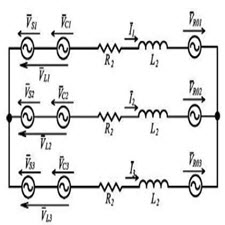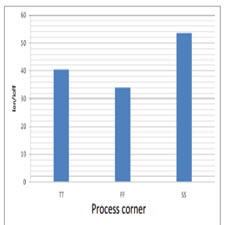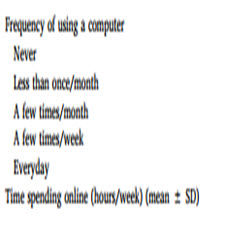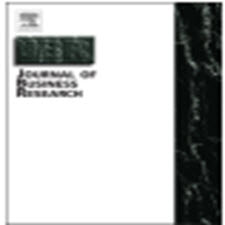![School-based Management[taliem.ir]](https://taliem.ir/wp-content/uploads/School-based-Managementtaliem.ir_-2.jpg)
School-based Management: Reconceptualizing to Improve Learning Outcomes
اطلاع رسانیEducational decentralization is a worldwide phenomenon, but as a concept it hides more than it reveals. It often refers to the devolution of some authority to the local school and community level, but two large problems remain. First, in all cases, key aspects of authority are retained at the regional and central level. In this sense, decentralization is a misnomer. Second, when decentralization does occur, it usually refers to structural elements (such as sitebased councils), thereby missing the day-to-day capacities and activities that would make it work for school improvement. What will move us forward, we believe, is to obtain a greater specific understanding of (a) under what conditions does school-based management produce best results, and (b) what are the relative roles and relationships between the school/community and the region/center.
This review paper pursues these questions in four sections. First, we review briefly the literature from Western sources to identify why school-based management (SBM) usually fails. Second, we consider very recent literature which unpacks the questions of SBM to identify the conditions and processes under which SBM does work. Interestingly, these factors involve both internal school/community conditions and external infrastructure components. Third, we take up recent research in developing countries to identify the similarities and differences to the Western research. We especially focus in this third section on projects which are obtaining promising results. Fourth, we summarize the main strategic implications for establishing powerful school-based developments which positively affect learning outcomes.
![Space Solar Power Programs and Microwave Wireless power Transmission Technology [taliem.ir]](https://taliem.ir/wp-content/uploads/Space-Solar-Power-Programs-and-Microwave-Wireless-power-Transmission-Technology-taliem.ir_-1.jpg)
Space Solar Power Programs and Microwave Wireless power Transmission Technology
اطلاع رسانیThe concept of placing enormous so- lar power satellite (SPS) systems in space represents one of a handful of new technological options that might provide large-scale, environmentally clean base load power into terrestrial markets. In the United States, the SPS conceptwas examined extensively during the late 1970s by the U.S. Department of Energy (DOE) and the National Aeronautics and Space Administration (NASA). More recently, the subject of space solar power (SSP) was re-examined by NASA from 1995-1997 in the “Fresh Look Study” and during 1998 in an SSP “Concept Definition Study.” As a result of these efforts, in 1999-2000, NASA undertook the SSP Exploratory Research and Technology (SERT) program, which pursued preliminary strategic technology research and development to enable large, multimegawatt SSP systems and wireless power transmission (WPT) for government missions and commercial markets (in space and terrestrial). During 2001-2002, NASA has been pursuing an SSP Concept and Technology Maturation (SCTM) program follow-up to the SERT, with special emphasis on identifying new, high-leverage technologies that might advance the feasibility of future SSP systems. In addition, in 2001, the U.S. National Research Council (NRC) released a major report providing the results of a peer review of NASA’s SSP strategic research and technology (R&T) road maps.

P-Q Control Matrix Converter Based UPFC By Direct Power Control Method
اطلاع رسانیIn the recent years, due to economics and environment problems, build of new power planet and transmission line become more difficult. Hence it is advisable to enhance power transfer capability of the existing transmission lines up to thermal limit instead of constructing new one. For enhancing the power capability, FACTS controller like SSC, TCSC, SVC are developed. But these controllers cannot compensate the real and reactive power separately. For this a controller called, Unified Power Flow Controller (UPFC) is developed which uses both the series and shunt controller with a common DC capacitor link. This capacitor brings several disadvantages such as affecting the reliability, high cost etc. This paper proposes a new topology for UPFC based on the Matrix converter design. Matrix converters (MCs) allow the direct ac/ac power conversion without dc energy storage links; therefore, the MC-based UPFC (MC-UPFC) has reduced volume and cost, reduced capacitor power losses, together with higher reliability. Theoretical principles of direct power control (DPC) based on sliding mode control techniques are established for an MC-UPFC dynamic model including the input filter. As a result, line active and reactive power, together with ac supply reactive power, can be directly controlled by selecting an appropriate matrix converter switching state guaranteeing good steady-state and dynamic responses.
![Modeling, Analysis and Optimal Location of[taliem.ir]](https://taliem.ir/wp-content/uploads/Modeling-Analysis-and-Optimal-Location-oftaliem.ir_-1.jpg)
Modeling, Analysis and Optimal Location of UPFC for Real Power Loss Minimization
اطلاع رسانیA new concept of Flexible AC Transmission system (FACTS) brought radical changes in the power system operation and control. A new technique using FACTS devices linked to the improvements in semiconductor technology opens new opportunities for controlling power and enhancing the usable capacity of existing transmission lines The UNIFIED POWER FLOW CONTROLLER is devised for the real time control and dynamic compensation of transmission systems, providing multifunctional flexibility required solving many of the problems facing the power delivery industry. Within the framework of traditional power transmission concepts, the UPFC is able to control, simultaneously or selectively all the parameters affecting power flow in the transmission line and this unique capability is signified by the adjective “unified” in its name. UPFC can independently control both active and reactive power in the line.

1Bit Sub Threshold Full Adders in 65nm CMOS Technology
اطلاع رسانیIn this paper a new full adder (FA) circuit optimized for ultra low power operation is proposed. The circuit is based on modified XOR gates operated in the subthreshold region to minimize the power consumption. Simulated results using 65nm standarad CMOS models are provided. The simulation esults show a 5% - 20% for frequency ranges from 1 KHz to 20MHz and supply voltages lower than 0.3V.

Information Communication Technology (ICT) use among PLHIV in China: A promising but underutilized venue for HIV prevention and care
اطلاع رسانیIn this paper, we report the use of information and communication technology (ICT) among people living with HIV (PLHIV) in Guangxi, China. A total 2987 participants were recruited from 12 sites with the highest number of cumulative HIV incidence, including 2 cities and 10 counties. A questionnaire survey was conducted to collect data on the participants’ social demographic characteristics, clinical outcomes, infections and coinfections, pattern of ICT use, and use and intention of using ICT in HIV and AIDS management. The data was analyzed using SPSS, version 24. The results showed 78.7% (n = 2347) never used a computer, 86.9% (n = 2587) had a cellphone, 32.7% (n = 207) owned an email account, and 85.4% (n = 544) owned a social media account. Less than half of the participants reported ever using ICTs for HIV management. Only 26.2% (n = 266) were willing to join a web-based HIV prevention program. Findings of this study suggest that there was an imbalance in the participants’ ICT device ownership and choices of media platform. Social media appeared to be a potential platform for health intervention among this group. There was a low penetration of computer use among rural participants and a large disparity between the urban and rural participants, which indicated a need to expand the current infrastructure related to ICTs and increase people’s health literacy. Future research also needs to pay attention to security and trustworthiness of the intervention program to better promote ICTs as an efficient and reliable platform for HIV prevention and care.

Research note: Machinery, manumission, and economic machinations
اطلاع رسانیThis research note reports upon advancements in computerization and big data creation within the off- highway plant and machinery sector. A thematic literature review synthesizes a disparate range of research initiatives and industrial developments and highlights specific examples of technological developments. A discussion regarding impact upon future employment concludes that rather than creating mass unemployment, computerization will change the employment horizon and continue to shape the global economic community. Education is quintessentially important to humanity which must master the machine and not become a slave to technology. Future proofing of educational provisions will therefore feature heavily in tomorrow's employment market. This provocative research note advances new ideas and theoretical perspectives that are specifically designed to stimulate academic debate in this novel and rapidly developing area of scientific endeavor.
![Strategies for the management and adoption of impact capture[taliem.ir]](https://taliem.ir/wp-content/uploads/Strategies-for-the-management-and-adoption-of-impact-capturetaliem.ir_-1.jpg)
Strategies for the management and adoption of impact capture processes within research information management systems
اطلاع رسانیFollowing the 2014 UK Research Excellence Framework (REF), attention across the Higher Education sector is turning to embedding impact measurement within the organisation. Impact is defined as the social, financial and environmental effects of research. Planning and capturing impact however is a difficult and resource- intensive activity, demanding both strategic commitment and infrastructure support. A means to systematically capture and monitor impact across the organisation is crucial to continued research success. In addition, with impact data capture as an emerging practice, there is the opportunity and necessity for a degree of standardisation in the approach to measuring impact across HEIs. Vertigo Ventures, an impact measurement consultancy, has been using and expanding its tool- VV-Impact Metrics with UK universities to support assessments by identifying impact pathways, impact indicators, evidence collection and analysis to improve the quality of theevidence and narrative. Vertigo Ventures has been working with Coventry University to use its VV-Impact Metrics tool in their self-service module (ERIC) to create a systematised data capture platform that can be readily used by the academic community to input data. This paper discusses the experience and learning from the process of embedding a solution institutionally.
![Improved ant colony algorithm for adaptive[taliem.ir]](https://taliem.ir/wp-content/uploads/Improved-ant-colony-algorithm-for-adaptivetaliem.ir_-1.jpg)
Improved ant colony algorithm for adaptive frequency-tracking control in WPT system
اطلاع رسانیWhen the distance between resonators is low enough for the coupling condition to be greater than the critical coupling, the single resonant peak at the load splits to form double peaks. This frequency-splitting phenomenon results in a reduction in the power transferred. In this study, an adaptive frequency-tracking control (AFTC) approach based on a closedloop control scheme is implemented to overcome this problem. An improved ant colony algorithm (IACA) was proposed in AFTC to track the maximum power point in real time. Then, simulations were performed to test the real-time characteristics of IACA. Finally, a wireless power transfer system with AFTC is demonstrated experimentally to validate the IACA results and the tracking of the optimal frequency.
![A big data analytics framework for scientific data management[taliem.ir]](https://taliem.ir/wp-content/uploads/A-big-data-analytics-framework-for-scientific-data-managementtaliem.ir_-3.jpg)
A big data analytics framework for scientific data management
اطلاع رسانیThe Ophidia project is a research effort addressing big data analytics requirements, issues, and challenges for
eScience. We present here the Ophidia analytics framework, which is responsible for atomically processing, transforming and manipulating array-based data. This framework provides a common way to run on large clusters analytics tasks applied to big datasets. The paper highlights the design principles, algorithm, and most relevant implementation aspects of the Ophidia analytics framework. Some experimental results, related to a couple of data analytics operators in a real cluster environment, are also presented.


